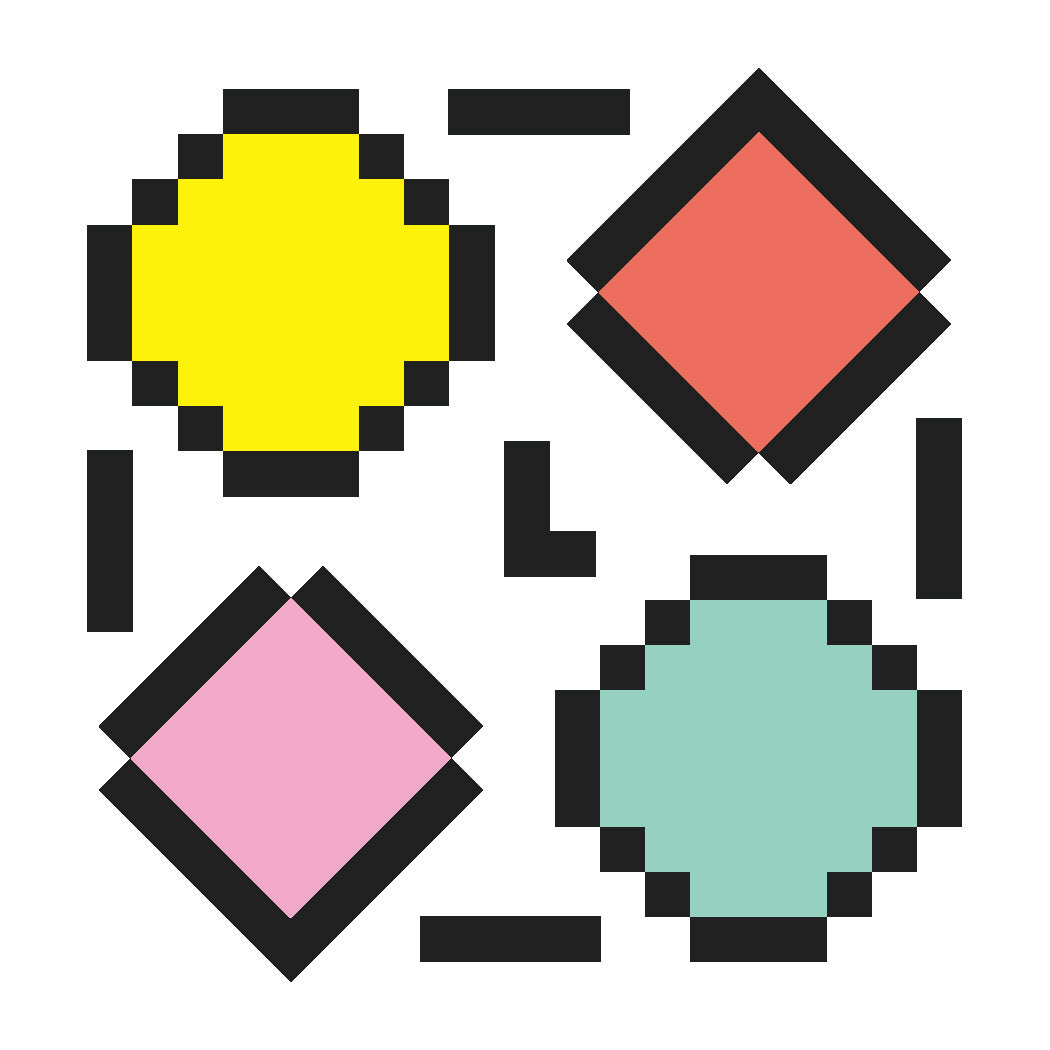Diamond painting has become a popular and relaxing hobby for craft enthusiasts around the world. The process of placing tiny, sparkling resin diamonds onto a canvas to create beautiful designs is both meditative and rewarding. Combining this art form with pixel art elements can bring a fresh, modern twist to your diamond painting projects, while also helping you achieve cleaner, more precise results. In today’s post, we’ll share some useful tips and tricks to help you level up your diamond painting game—particularly when incorporating pixel art designs.
1. Choose the Right Pixel Art Designs
The beauty of pixel art lies in its simplicity and geometric nature. Pixel art designs typically feature bold, clear blocks of color, making them a perfect match for diamond painting. The individual diamond "pixels" align naturally with the blocky, grid-like structure of pixel art, making the entire creative process flow more smoothly.
Tip:
- When selecting a design, look for pixel art that is bold and simplified. Avoid overly intricate designs with too many fine details that may not translate well into the diamond painting medium.
- If you're feeling creative, you can even create your own pixel art design using pixel art software like Piskel or Aseprite, ensuring it fits the pixelated style and works well with diamond painting.
2. Pick the Right Diamond Size and Shape
Diamond painting diamonds come in two common shapes: round and square. For pixel art-style projects, square diamonds are generally the better option. The square shape allows for cleaner, more precise placement, which helps the image retain its pixelated charm. Square diamonds also fit together more tightly, creating a more cohesive and structured look, which is especially important when working with pixel art.
Tip:
- If you’re working with larger color blocks, square diamonds will help maintain the clean lines of the pixel art.
- Pay attention to color choices as well. Some pixel art designs use bold, contrasting colors to create definition, so having the right shade of diamonds is key to achieving the correct effect.
3. Plan Your Workspace Efficiently
While diamond painting is a relaxing activity, it can become a bit overwhelming if you don’t plan your workspace carefully—especially when working with pixel art designs that involve smaller, more defined areas. To make the process more manageable, it’s helpful to break down your canvas into smaller sections, allowing you to focus on one area at a time.
Tip:
- Use a grid system to map out the design and divide your canvas into sections. This way, you can fill in large blocks of color before focusing on the finer details.
- Protect your progress by covering completed sections with a plastic film or parchment paper to avoid smudging and keep your workspace clean.
4. Avoid Pressing Diamonds Too Hard
Many newcomers to diamond painting make the mistake of pressing too hard on the diamonds as they’re placed onto the canvas. While it may seem like pressing them down firmly would secure them better, excessive pressure can distort the diamonds or make them less adhesive to the canvas.
Tip:
- Apply moderate pressure when placing each diamond, just enough to ensure it sticks securely. After completing a section, gently press over the diamonds with a rolling pin or tool specifically designed for diamond painting to further secure them in place.
- If you notice any diamonds are loose or have shifted, carefully reposition them using a diamond painting tool or tweezers.
5. Keep Your Tools Organized
The diamond painting process can get messy, with tiny diamonds and tools scattered around your workspace. Keeping everything organized will not only make the process smoother but will also help you avoid mixing colors or losing small tools.
Tip:
- Use a tray or organizer with separate compartments for each color of diamonds to keep everything in order. Color-coded containers or plastic bags are also helpful for keeping track of small quantities of diamonds.
- Periodically clean your workspace to remove any dust or stray diamonds. A small handheld vacuum or a soft brush can help keep your canvas and work surface tidy.
6. Add Personalized Touches with Additional Embellishments
One of the great things about diamond painting is its flexibility. You’re not limited to just the diamonds that come with the kit—you can enhance your project with extra embellishments such as rhinestones, beads, or even glitter. This is especially fun when working with pixel art, where small touches can make a big impact.
Tip:
- Consider adding rhinestones or special effects diamonds to highlight specific areas of the design, such as eyes, stars, or other focal points in the artwork. These additional embellishments can give your piece a unique, multi-dimensional look.
- You can also add a layer of protective film to the completed painting to keep it safe from dust, fading, or other damage over time.
Conclusion
Diamond painting is not just about filling in colors; it's about creating a unique, tactile piece of art. When you combine pixel art with diamond painting, you’re able to experiment with clean lines, bold colors, and geometric patterns, all while enjoying the meditative process of placing each diamond. By following these tips and tricks, you'll be able to enhance your technique, achieve cleaner results, and create stunning works of art that are both visually striking and personally meaningful.
We hope these tips help you bring your pixel art-inspired diamond painting projects to life! Whether you're new to the world of diamond painting or you're a seasoned pro, these techniques can help you get the most out of your crafting experience. If you have any questions or want to share your own tips, feel free to leave a comment below—we’d love to hear from you!



0 Kommentare